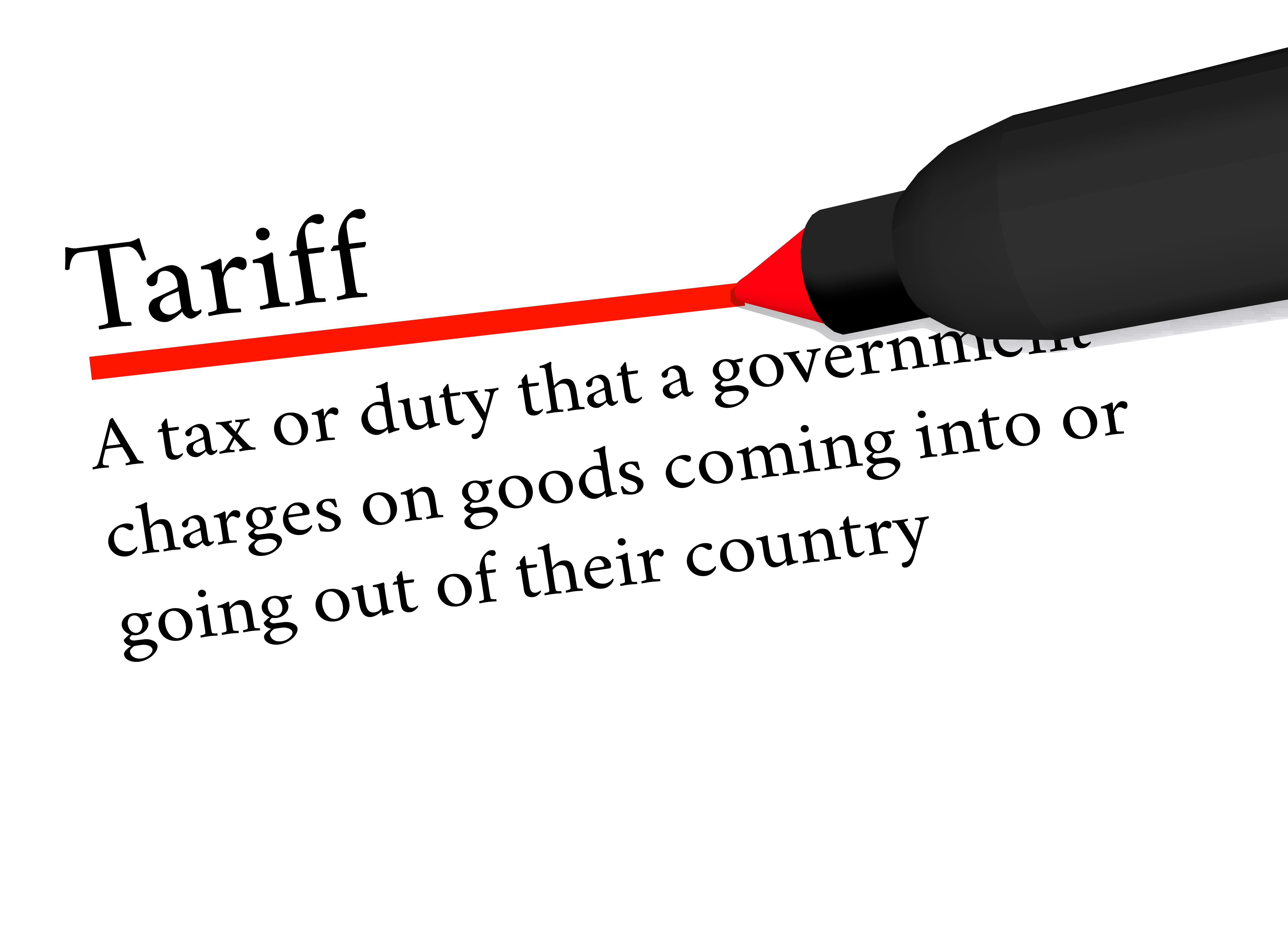The man-made obstacles to international trade are, essentially, caused by the introduction of the so- called commercial policy. This measure includes imposition of tariff and non-tariff barriers and the creation of what are called customs unions or common markets.
1. Tariffs:
Tariffs are essentially the taxes or duties imposed on the imported or exported goods. Tariffs are aimed at altering the import price (or the export price) so as to regulate the volume of imports (or of exports).
Tariffs raise the prices of imported goods, and by making imported goods more expensive, they hope to (a) discourage domestic consumers from consuming foreign goods, and (b) encourage consumption and production of the domestically produced import-replacement substitutes.
ADVERTISEMENTS:
Tariffs would, therefore, distort the world comparative advantage pattern by discouraging efficient production (in the rest of the world) and encouraging inefficient production (in the home country).
Similarly, tariffs lead to a fall in the volume of international trade, preventing the countries from obtaining gains from trade (i.e. the gains arising partly out of exchange and partly from specialization adding up to total gains from trade).
2. Non-tariff Barriers:
While tariff constitute ‘visible’ barriers to trade, the non-tariff barriers, by contrast, constitute the hidden or ‘invisible’ barriers to trade. The non-tariff barriers mainly include direct restrictions (the so-called quotas), monetary restrictions, and technical and administrative regulations.
ADVERTISEMENTS:
International commodity agreements, customs unions, etc. constitute an altogether separate category of market and trade restrictions which distort the pattern and volume of international trade.
Quantitative, abstrictions, or quotas, are imposed with a view to reduce the quantity of imports (or exports) to a limited size. The effect of quotas is more severe than those which are created by tariffs. Import quotas are more common than export quotas.
Monetary restrictions are another form of non-tariff barriers. Even though there are no tariffs or no quota restrictions on the volume of imports, a country can impose foreign exchange controls to accomplish precisely the same effects of limiting the volume of imports.
The importer needs foreign exchange to import foreign goods, and the government of the country can deny the use of foreign exchange for certain types of imports or for goods imported from certain countries.
ADVERTISEMENTS:
By exercising such controls over the use of foreign exchange (they are called exchange controls) the government of the country can restrict the volume of trade. The exchange controls constitute another, obstacle to trade Exchange controls are quite widespread, particularly in the poor countries which experience severe shortage of foreign exchange.
The third form of non-tariff barriers includes administrative and technical regulations. Technical regulations include custom restrictions on bringing certain products either on the ground that they constitute a health hazard or they do not meet the safety and health regulations in the country.
Administrative regulations include regulations with regard to labelling, packaging, custom formalities and endless columns to be filled in several forms by the one who is importing goods, etc.
Very often, there is administrative delay, red-tape and corruption in customs clearing. All of these could be so annoying and frustrating that the potential importers get thoroughly disgusted, and in the end, they give up the idea of importing anything at all.
Finally, there are government procurement policies, or state trading practices, which are common to many nations. These policies involve giving preferences to domestic producers for government procurement.
In accepting public tenders, governments give preference to the local tenders rather than the foreign tenders. Additionally, many governments practise policies of granting production subsidies, tax concessions and other fiscal and monetary incentives to encourage export expansion or import substitution.
They may not be directly aimed at reducing or distorting the trade volume or pattern or direction, but, in effect, they amount to the same.
All of these measures, besides several other dozens, constitute the so-called ‘hidden’ non- tariff obstacles to international trade. They are all man-made; and the human action has not been sufficient in the direction of trying to reduce the economic distance which these artificial barriers have created and enlarged over the past several years.

